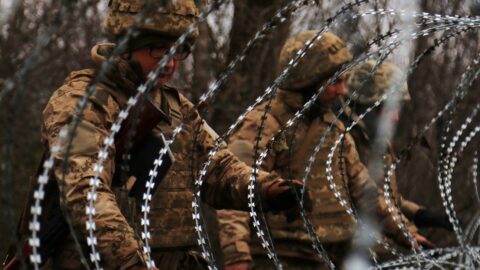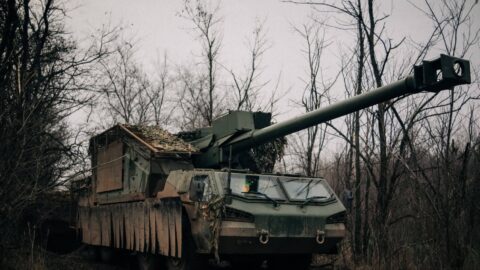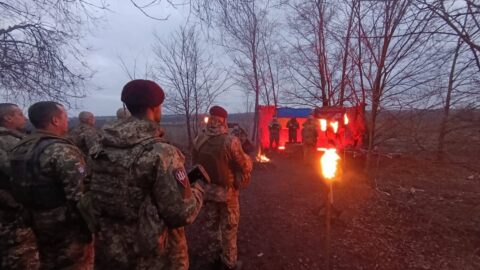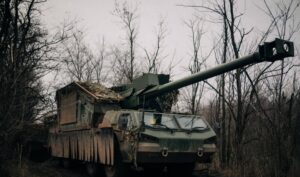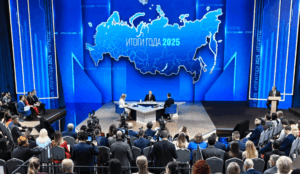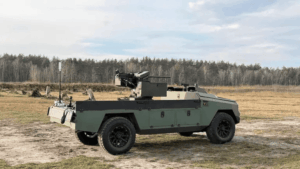Russia Strikes Substations Feeding Ukraine’s Western Nuclear Plants – Kyiv Calls for Urgent IAEA Response.
“These were not accidental but well-planned strikes. Russia is deliberately endangering nuclear safety in Europe,” Sybiha wrote.
Late on the night of November 7–8, Russia carried out coordinated strikes on the electrical substations supplying power to the International Atomic Energy Agency-monitored Khmelnytskyi Nuclear Power Plant (KhNPP) and Rivne Nuclear Power Plant (RNPP) in western Ukraine, according to Ukrainian Foreign Minister Andrii Sybiha.
The attacks are part of what Ukraine described as one of the largest overnight assaults on its energy infrastructure since the full-scale invasion began in February 2022.
Over 450 strike drones and 45 missiles were reportedly used in the campaign.
Although Ukrainian officials say the nuclear plants themselves did not suffer a direct malfunction, the targeted substations form a critical part of the off-site power supply needed to safely operate and cool reactors. In recent months the IAEA has documented earlier attacks which caused loss of access to external power lines at several plants.
Nuclear Safety at Risk
Damage to substations that feed nuclear plants is considered a grave threat because those external power lines are fundamental to maintaining reactor cooling, monitoring systems, and spent-fuel storage operations. The IAEA warned that such disruptions carry the risk of escalation into serious nuclear incidents.
Kyiv has publicly labelled the strikes as “nuclear terrorism” and urged the international community to treat them as deliberate attempts at coercion and blackmail. Foreign Minister Sybiha specifically called on major energy-importing countries such as China and India to exert pressure on Moscow to halt these attacks.
International Implications and Reactions
The strike and its implications have triggered alarm in the international arena. The IAEA reiterated the need for “maximum military restraint in the vicinity of nuclear facilities” and highlighted how attacks on power infrastructure can undermine nuclear safety.
Energy ministers from the G7 quickly condemned the strikes and pledged increased support to Ukraine’s energy security. The incident also raises broader questions about the risks to European nuclear safety, as fallout or disruption in Ukraine could have cross-border consequences.
Ukraine’s Vulnerability and Winter Outlook
The timing — as Ukraine enters its fourth winter under full-scale war — magnifies the danger. Beyond the nuclear dimension, the energy strikes threaten civilian heating, hospital power, and essential services across the region.
For Ukraine, the dual challenge of war-time energy resilience and nuclear safety converge.
With multiple substations damaged and repeated drone/missile waves, Ukraine says this is the most massive attack on its generation facilities to date. While immediate reactor shutdowns may not have occurred, the pattern of strikes illustrates how power infrastructure is being targeted to exert pressure and raise the stakes for Kyiv and its allies.
What Happens Next?
Ukraine is pressing for an urgent session of the IAEA Board of Governors to address the situation and push for accountability and a stronger international response. Meanwhile, the repair and safeguarding of the grid and substation network become urgent priorities.
The incident underscores the need for heightened protection of energy infrastructure, an issue that allies must pay more attention to. As winter deepens and energy supply becomes more precarious, attacks of this nature not only threaten nuclear safety but also civilian resilience and stability in the region.
Tags: Energy infrastructure IAEA Khmelnytskyi NPP Nuclear safety nuclear terrorism Rivne NPP Russia-Ukraine War Substation attacks


